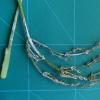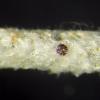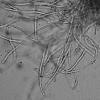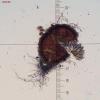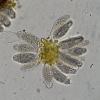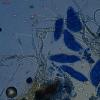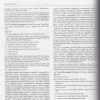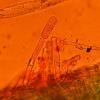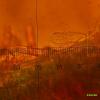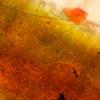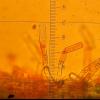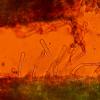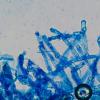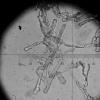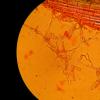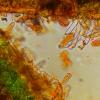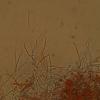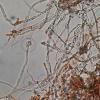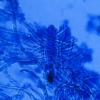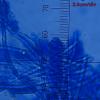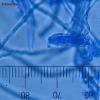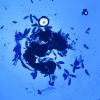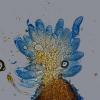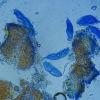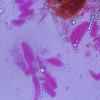
09-12-2025 12:06
 Andgelo Mombert
Andgelo Mombert
Bonjour,Je recherche l'article concernant Hypobryo

07-12-2025 16:07
Arnold BüschlenHallo, ich habe in einer Moos-Aufsammlung (epiphy

08-12-2025 21:04
Mark Stevens"Hello everyone,I'm relatively new to microscopy (

08-12-2025 18:59
 Lothar Krieglsteiner
Lothar Krieglsteiner
.. found by a seminar-participant, I do not know t

08-12-2025 17:37
 Lothar Krieglsteiner
Lothar Krieglsteiner
20.6.25, on branch of Abies infected and thickened

16-03-2014 22:00
Hello,I found this species a few months ago but ha

08-12-2025 13:39
Thomas Læssøehttps://svampe.databasen.org/observations/10572899
Another powdery mildew on Foeniculum vulgare - Leveillula lanuginosa (f. foeniculi)
Stephen Martin Mifsud,
12-11-2016 07:51
 Hi,
Hi,I have found another powdery mildew infection on Foeniculum vulgare few days ago. Many specimens were infected. The fungus produced numerous chasmothecia which initially they are bright yellow and become dark reddish brown when fully developed. Unlike Erysiphe, the chasmotheca do not have projections from their walls. I thought of Phyllactinia sp. or something related.
Could you please suggest terms / labels A to E in the annotated image 7210s.jpg.
Peter Püwert,
12-11-2016 11:21
Re : Another powdery mildew on Foeniculum vulgare - a Phyllactinia sp.?
Hi,
in my opinion is this the powdery mildew Leveillula lanuginosa (Fuckel) Golovin.
A Mycel
B Ascus (2- spored)
C ? (Oil body ?)
D Spore
E Destroyed spore ?
Greetings Peter.
in my opinion is this the powdery mildew Leveillula lanuginosa (Fuckel) Golovin.
A Mycel
B Ascus (2- spored)
C ? (Oil body ?)
D Spore
E Destroyed spore ?
Greetings Peter.
Stephen Martin Mifsud,
12-11-2016 13:16

Re : Another powdery mildew on Foeniculum vulgare - a Phyllactinia sp.?
Dear Peter, thank you very much for your reply. This genus does not appear in my few books and pdf I owe.. so I would have not found it. I double check if it matches well, but a quick search looks good and it is commonly reported on fennel plants.
https://nt.ars-grin.gov/fungaldatabases/fungushost/new_frameFungusHostReport.cfm
Thanks for the labelling. So that's an bitunicate ascus with two large ascospores, and interestingly one or two oil bodies (to confirm?). Regards label A, I was curious to know what are those yellowish bumps on the mycelium, while E is not a squashed ascus but, as I can see in a previous photo, some kind of supporting tissue holding and giving rise to the developing ascii, and was curious if it has a special name.
THANKS!
Peter Püwert,
12-11-2016 18:32
Re : Another powdery mildew on Foeniculum vulgare - a Phyllactinia sp.?
Hi Stephen,
there is a very good and current book about plant- parasitic microfungi, unfortunately only in German:
Klenke / Scholler (2015): Plant- parasitic microfungi. An identification book for smuts, rusts, powdery and downy powdery, chytrids and Taphrinales........Springer- Verlag Berlin Heidelberg. 1126 pp., 342 color photographs, 106 black- and - white photographs and figures.
Greetings Peter.
there is a very good and current book about plant- parasitic microfungi, unfortunately only in German:
Klenke / Scholler (2015): Plant- parasitic microfungi. An identification book for smuts, rusts, powdery and downy powdery, chytrids and Taphrinales........Springer- Verlag Berlin Heidelberg. 1126 pp., 342 color photographs, 106 black- and - white photographs and figures.
Greetings Peter.
Dartanha Soares,
14-11-2016 12:15

Re : Another powdery mildew on Foeniculum vulgare - a Phyllactinia sp.?
Although the fungus could be L. lanuginosa, it would be interesting check the anamorph state, since this species has very peculiar conidia, and both (primary and secondary) has similar morphology (see image attached).
About the labels:
A) oil drops (they surely are not "hyphal appressoria", since for Leveillula their are multilobed or coral-like, however if the fungus not belongs to Leveillula they could be hyphal appressoria. But as I said, to me, they seems like oil drops)
B)
C)
D)
E) Ascogenous cells
About the labels:
A) oil drops (they surely are not "hyphal appressoria", since for Leveillula their are multilobed or coral-like, however if the fungus not belongs to Leveillula they could be hyphal appressoria. But as I said, to me, they seems like oil drops)
B)
C)
D)
E) Ascogenous cells
Stephen Martin Mifsud,
14-11-2016 19:33

Re : Another powdery mildew on Foeniculum vulgare - a Phyllactinia sp.?
In fact, prior this message, I read about the conidial stage and went to seek other specimens and managed to photograph some conidia. they were quite scarce and did not managed to take good photos as I wished, but I have some conidia to share. I will post tomorrow as i do not have time tonight.
Thanks and for later....
Thanks and for later....
Dartanha Soares,
16-11-2016 11:28

Re : Another powdery mildew on Foeniculum vulgare - a Phyllactinia sp.?
Well, you are right, the images are of poor quality and the cingulum-like ends are not clear enough, additionally the conidia size you provided do not fit with L. lanuginosa (40-80 micra according to Braun & Cook, 2012). I suggest you should try to observe some young colonies and verify: if the conidophores arise from stomata; if the hyphal appressoria are multilobed or coral-like; and also to check some primary conidia morphology.
Stephen Martin Mifsud,
16-11-2016 17:11

Re : Another powdery mildew on Foeniculum vulgare - a Phyllactinia sp.?
Dear Dartanha,
I have mounted again the infected sample and I don't know, this seams to be an Erysiphe sp. I am suspecting that there were two infections on the group of plants that I sampled were I assumed that the powdery mildew is caused by one species: unless you can suggest a different Leveillula species.
I think that I have observed shortly-branched coral appressoria.
Now it rained remarkably and the temp is getting down.
What do you think?
I have mounted again the infected sample and I don't know, this seams to be an Erysiphe sp. I am suspecting that there were two infections on the group of plants that I sampled were I assumed that the powdery mildew is caused by one species: unless you can suggest a different Leveillula species.
I think that I have observed shortly-branched coral appressoria.
Now it rained remarkably and the temp is getting down.
What do you think?
Dartanha Soares,
16-11-2016 18:16

Re : Another powdery mildew on Foeniculum vulgare - a Phyllactinia sp.?
Looking at your new pictures it seems to me that this is not a Leveillula. In fact, I was wondering why you thought this was a distinct species from the one you reported in a previous post. Are the samples from the same locality?
The conidia size and morphology seems to fit with E. heraclei, however the several asci per chasmothecia are unusual (E. heraclei usually has 3-7(-10)). How many ascospores per ascus? Always 2 or there are more? I'm asking that because I couldn't see clearly, due to the dark blue staining. I could be wrong, but the fungus that you have seems to fit with E. heraclei.
The conidia size and morphology seems to fit with E. heraclei, however the several asci per chasmothecia are unusual (E. heraclei usually has 3-7(-10)). How many ascospores per ascus? Always 2 or there are more? I'm asking that because I couldn't see clearly, due to the dark blue staining. I could be wrong, but the fungus that you have seems to fit with E. heraclei.
Stephen Martin Mifsud,
16-11-2016 21:57

Re : Another powdery mildew on Foeniculum vulgare - a Phyllactinia sp.?
Hi,
I am also wondering the same thing. The specimen is from the same locality and almost same spot of the other post where Erysiphe heraclei was collected, but in my inexperience I thought to see two kinds of mildews:
1. with mild mycelium spread and without chasmothecia
2. with a dense lanose-like mycelium with plenty of chasmothecia esp. on stems.
So in this post, I collected a stem and few leaves and mostly examined the chasmothecium. I checked quickly the mycelium and it was sterile (maybe I checked the stem mycelium). When then you asked to check for the conidia, my leaves where very dry so I went to recollect from the same locality and photographed the conidia.
This means that two options are possible:
1. There are two mildews within the same Foeniculum population
2. There is only Erysiphe heraclei, in some plants it is fully developed and mature with numerous chasmothecia, in other plants, it is younger and less developped.
Here's another mount from a different leaf (with lanose mycelium) taken during the second collection. It looks like Erysiphe heraclei, supporting option 2, but the contents of the chasmothecia are closer to Leviellula sp.
I will hence, shortly re-examine the chasmothecium present on the stem and collected also from the second collection. hope we can resolve this case!
I am also wondering the same thing. The specimen is from the same locality and almost same spot of the other post where Erysiphe heraclei was collected, but in my inexperience I thought to see two kinds of mildews:
1. with mild mycelium spread and without chasmothecia
2. with a dense lanose-like mycelium with plenty of chasmothecia esp. on stems.
So in this post, I collected a stem and few leaves and mostly examined the chasmothecium. I checked quickly the mycelium and it was sterile (maybe I checked the stem mycelium). When then you asked to check for the conidia, my leaves where very dry so I went to recollect from the same locality and photographed the conidia.
This means that two options are possible:
1. There are two mildews within the same Foeniculum population
2. There is only Erysiphe heraclei, in some plants it is fully developed and mature with numerous chasmothecia, in other plants, it is younger and less developped.
Here's another mount from a different leaf (with lanose mycelium) taken during the second collection. It looks like Erysiphe heraclei, supporting option 2, but the contents of the chasmothecia are closer to Leviellula sp.
I will hence, shortly re-examine the chasmothecium present on the stem and collected also from the second collection. hope we can resolve this case!
Stephen Martin Mifsud,
17-11-2016 08:00

Re : Another powdery mildew on Foeniculum vulgare - a Phyllactinia sp.?
So finally, I have solved the dilemma. I've examined material from a leaf with typical dense compact-lanose growth which few days ago, I have observed onlysterile mycelia. Again the same picture, with sterile mycelia, some appressoria (to confirm) and few contaminant fungi like alternaria.... but after insisting, I finally found what we were looking for. A secondary conidium with typical morphology of Leveillula, measuring 48um. See images and their comments.
So basically the photos of the previous posts are of Erysiphe heraclei from another specimen in a population with two mildews competing on the same host in the same locality and eventually I had a mixed collection. Erysiphe heraclei, as stated earlier has a less dense non-lanose mycelia and without chasmothecia.
Later I recheck and photograph the Chasmothaecia of the Leveillua
So basically the photos of the previous posts are of Erysiphe heraclei from another specimen in a population with two mildews competing on the same host in the same locality and eventually I had a mixed collection. Erysiphe heraclei, as stated earlier has a less dense non-lanose mycelia and without chasmothecia.
Later I recheck and photograph the Chasmothaecia of the Leveillua
Stephen Martin Mifsud,
18-11-2016 13:07
Stephen Martin Mifsud,
19-11-2016 06:16

Re : Another powdery mildew on Foeniculum vulgare - a Phyllactinia sp.?
Here's the data about the Chasmothaecia and ascii:
Sex organ: Chasmothecia numerous esp. on stems
Chasmothaecia shape: Discoid, circular in outline with flattened sides
Chasmohtaecia colour: Amber, brown then dark brown when fully mature.
Chasmothaecia size: 225.9 - 254.1 µm (x? = 240 µm)
Appandages shape: Not observed, possibly indistinct from surrounding mycelia
Appandages length: Not observed
Terminal part of Appandage: Possibly unbranched or rarely shortly branched at the apex, although it was not clear if the examined tissue was hyphae of the mycelium.
Peridium cells shape: Sub-spherical, irregularly angled
Peridium cells size: 7-15 µm
No. of ascii in thecium: 35-40 c.
Ascus shape: Elipsoid-ovoid, stalked with asymetric wavy sides
Ascus colour: Hyaline
Ascus surface: Smooth
Ascus wall: Bitunicate, thick (1.5-3.0µm)
Ascus length: 86 - 97.5 µm (x? = 91.75 µm)
Ascus width: 22.9 - 29.4 µm (x? = 26.14 µm)
Ascus L/W ratio: 3 - 4.1 µm (x? = 3.56 µm)
Number of Ascospores per ascus: 2
Oil bodies in Ascus: Present, conspicuous and large, usually 1 to 3 per ascus.
Ascospore shape: Ellipsoid-fusiform
Ascospore colour: Greyish-olivaceous
Ascospore surface: Smooth, but contents very granular
Ascospore length: 32.7 - 40.6 µm (x? = 36.62 µm)
Ascospore width: 12.3 - 16 µm (x? = 14.15 µm)
Ascospore Q ratio: 2.2 - 3.1 µm (x? = 2.62 µm)
There are two(three) charachters which mismatch marginally with the description of Braun and cooke:
1. The number of ascii is reported to be 15-30, but the specimen has +/- 40
2. I could not detect any appandages, but it is stated that "sometimes they are sparingly developed" and "myceloid".
3. The spores are slightly more elongated (but volume-wise the same)
Having all the picture, I think that L. lanuginosa is a good match compared to L. taurica.
Sex organ: Chasmothecia numerous esp. on stems
Chasmothaecia shape: Discoid, circular in outline with flattened sides
Chasmohtaecia colour: Amber, brown then dark brown when fully mature.
Chasmothaecia size: 225.9 - 254.1 µm (x? = 240 µm)
Appandages shape: Not observed, possibly indistinct from surrounding mycelia
Appandages length: Not observed
Terminal part of Appandage: Possibly unbranched or rarely shortly branched at the apex, although it was not clear if the examined tissue was hyphae of the mycelium.
Peridium cells shape: Sub-spherical, irregularly angled
Peridium cells size: 7-15 µm
No. of ascii in thecium: 35-40 c.
Ascus shape: Elipsoid-ovoid, stalked with asymetric wavy sides
Ascus colour: Hyaline
Ascus surface: Smooth
Ascus wall: Bitunicate, thick (1.5-3.0µm)
Ascus length: 86 - 97.5 µm (x? = 91.75 µm)
Ascus width: 22.9 - 29.4 µm (x? = 26.14 µm)
Ascus L/W ratio: 3 - 4.1 µm (x? = 3.56 µm)
Number of Ascospores per ascus: 2
Oil bodies in Ascus: Present, conspicuous and large, usually 1 to 3 per ascus.
Ascospore shape: Ellipsoid-fusiform
Ascospore colour: Greyish-olivaceous
Ascospore surface: Smooth, but contents very granular
Ascospore length: 32.7 - 40.6 µm (x? = 36.62 µm)
Ascospore width: 12.3 - 16 µm (x? = 14.15 µm)
Ascospore Q ratio: 2.2 - 3.1 µm (x? = 2.62 µm)
There are two(three) charachters which mismatch marginally with the description of Braun and cooke:
1. The number of ascii is reported to be 15-30, but the specimen has +/- 40
2. I could not detect any appandages, but it is stated that "sometimes they are sparingly developed" and "myceloid".
3. The spores are slightly more elongated (but volume-wise the same)
Having all the picture, I think that L. lanuginosa is a good match compared to L. taurica.
Dartanha Soares,
21-11-2016 10:55

Re : Another powdery mildew on Foeniculum vulgare - Leveillula lanuginosa (f. foeniculi)
Hi Stephen,
Ok, last anamorph photos and those of the teleomorph fits with L. lanuginosa.
Ok, last anamorph photos and those of the teleomorph fits with L. lanuginosa.

